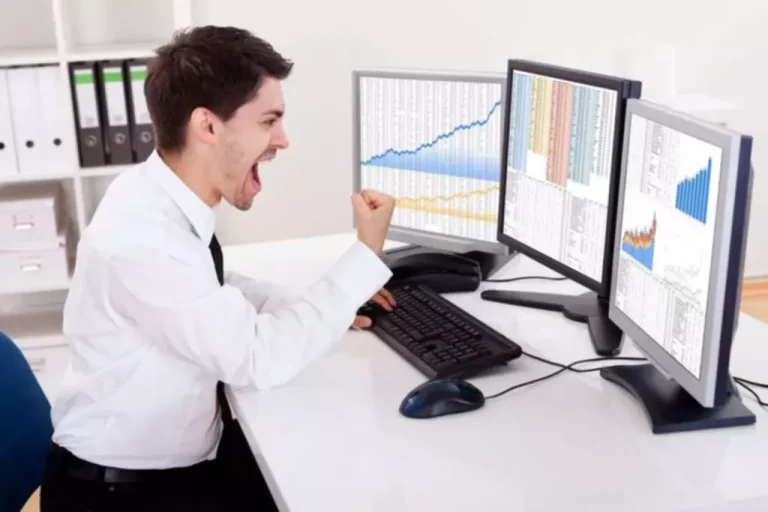Content
Any member registered with the Capital Market Segment of the National Stock Exchange of India Ltd (NSEIL) and has a net worth of Rs. 1 crore or above at any point in time market maker vs liquidity provider can act as a market maker for the SME IPO. The member desirous to become a market maker must apply for one-time registration to the NSEIL. The terms and aspects of the agreement shall be subject to the regulations, laws and norms issued by the Stock Exchange or SEBI. The Synthetix Liquidity App offer users a way to passively earn fees and rewards by providing the liquidity to power trading products in the Synthetix ecosystem. That’s why we’re a leading voice on how to enhance the markets to work even better than they do today.
The Importance of Market Maker Services

For instance, if a user executes a buy order for ETH in a liquidity pool containing ETH/DOT and the volume of ETH shoots up, the Constant function market maker liquidity pool will be out of balance. An equivalent buy order for DOT will be placed to balance the overall token liquidity across the board. The price doesn’t swing radically, and it cuts down on potential slippage incidents. NYSE Arca Lead Market Makers (LMMs) provide reliable liquidity throughout the trading day and during opening and closing auctions for NYSE Arca-listed ETPs. LMMs and Supplemental LMMs have opportunities for enhanced trading incentives when meeting certain market quality benchmarks. The NYSE Membership On Ramp program provides significant discounts to fees for NYSE trading licenses, ports, and market data products.
Market Makers vs. Designated Market Makers
Previously referred to as specialists, DMMs are essentially lone market makers with a monopoly on the order flow of a particular security or securities. Because the NYSE is an auction market, bids and asks are competitively forwarded by investors. Order books and AMMs are both trading models used in the financial markets. Ordinarily, order books are known for their intermediary interference and management of the order flow. On the other hand, AMM facilitates the trading of crypto assets without the need for a counterparty. Automated market makers work with liquidity pools, https://www.xcritical.com/ which are essentially crowdsourced funds for each trading pair.

Decentralized network protocols
Their presence enhances market liquidity, reduces price volatility, and contributes to the overall efficiency of stock trading. Market makers are active participants in the complex dance of price discovery. Through the continuous quoting of bid and ask prices, they provide valuable information to the market. These quotes reflect the ever-changing supply and demand dynamics for a specific asset, thereby offering insights into its fair market value.

This way, AMM platforms always maintain an equal measure of liquidity for each respective pool. However, at the end of the calculation, the primary aim is to determine a stable price for each asset in that liquidity pool using the smart contract algorithm. A liquidity pool is a smart contract-powered financial tool that provides liquidity for the trading of cryptocurrencies. Then, the mathematical algorithm calculates the asset price based on the number of tokens in the pool. To make sure each asset has enough liquidity, the algorithm automatically adjusts the ratio of the crypto assets in the pool relative to the trade size, which impacts each asset’s price. This makes sure the underlying assets are equal in value with enough liquidity.
The specialist process exists to ensure that all marketable trades are executed at a fair price in a timely manner. Automated market makers (AMMs) are a form of decentralized cryptocurrency trading platform that uses smart contracts to enable token swaps and value exchange. Unlike centralized exchanges, this process doesn’t rely on order books to determine asset prices. Instead, it uses a mathematical formula to determine prices based on the asset’s supply and demand curve.
- A market maker is a firm or individual that stands ready to buy or sell a security.
- The competitive nature of the market maker landscape serves as a boon to traders and investors.
- By standing ready to buy and sell, Market Makers ensure a ready market for a wide range of securities, thus enhancing market liquidity.
- Anytime you invest in stocks, someone is on the other end of your trade, and it could be a market maker.
- The DMM must also set the opening price for the stock each morning, which can differ from the previous day’s closing price based on after-hours news and events.
Market makers ensure that there is always a standing bid and ask price for a given instrument, allowing investors to buy or sell at any time during trading hours. This continuous availability of prices ensures that there is liquidity in the market and enables investors to execute their trades promptly. Without market makers providing these prices, buyers and sellers would struggle to find counterparties and face challenges in executing their orders efficiently. One of the paramount functions of market makers is their ability to maintain stability in asset prices. In turbulent times or when there’s a sudden surge in demand or supply, market makers step in to act as stabilizers. By absorbing excess supply or demand, they prevent abrupt and extreme price swings that could otherwise unsettle investors and undermine market integrity.
Regardless of an individual asset’s popularity, market makers provide liquidity to meet whatever level of investor demand might exist. In return for providing this essential function, market makers are able to profit by capturing the spreads between bid and ask prices. To facilitate smooth trading and ensure liquidity, market making services play a vital role. Market makers are individuals or firms that provide continuous buy and sell quotes for a particular financial instrument, thereby creating a market for it. They enhance market efficiency by bridging the gap between buyers and sellers. Market Makers play a crucial role in maintaining liquidity and stability in the financial markets.
Meanwhile, less active and relatively illiquid assets will yield wider spreads and comparatively greater “passive profits” for the market maker. In times of volatility, market makers provide liquidity and depth when other participants may not—ensuring markets stay resilient. Market makers play a crucial role in injecting liquidity into the markets by continuously providing bid and ask prices for a wide range of assets. Moreover, market makers help maintain stability in the market by absorbing temporary imbalances in supply and demand. When there is an excess of buyers or sellers, market makers adjust their quotes to incentivize trading and bring the market back into balance. In addition to matching orders internally, market makers may also route orders to appropriate venues, such as exchanges or alternative trading platforms, if necessary.
What is even more intriguing is that they ensure a more stable pricing environment. Breaking down the formula gives us a better insight into how this pricing algorithm calculation really works. The end-point is to retain the same value for the total liquidity in a pool. This is achieved by reducing the value of one asset and increasing the other to ensure equilibrium. AMMs charge a small fee for every transaction, but it’s often a fraction of the trade.
In essence, smart contracts work on the premise of ‘if and then.’ Once the conditions are fulfilled, the smart contract gives the go-ahead with little to no interference from an outside source. The NYSE Research team explores market trends, analyzes exchange products and trading situations, and offers data-driven perspectives that promote greater understanding of our markets. For example, we recently analyzed how increased retail activity in the equities market has affected various aspects of trading, in particular the period immediately after the opening auction. Market participants often avoid this time of day due to higher volatility, an approach worth re-evaluating given current trends.
Although the bid-ask spread seems small due to high trading volume, market makers generate substantial profits from the trades. The market makers of the issue provide two-sided prices, buy and sell prices for SME shares. The difference between the bid and ask price is called the spread, which represents the market marker’s profit. Trading at the NYSE combines the speed and determinism of our Pillar technology platform, the transparency from instant access to rich data, and the value of human oversight.
Yes, SEBI ICDR Regulations mandates it for SMEs going public to have market making arrangement for minimum 3 years of period since the day of listing. Keeper fees, open interest fees, losing trades, and liquidations result in higher rewards for LPs. Fees from Synthetix products are directed to Liquidity Providers (LPs) in addition to rewards from various incentive programs. LPs earn a share of these fees distributed pro-rata according to their share of the total liquidity provided in addition to various rewards or incentive programs that benefit LPs. We have previously studied Closing Auction liquidity, participation and price dislocation, and now focus on the price impact of auction order submission.
